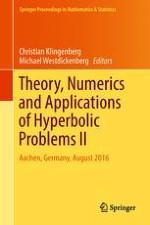2018 | OriginalPaper | Buchkapitel
A Unified Hyperbolic Formulation for Viscous Fluids and Elastoplastic Solids
verfasst von : Michael Dumbser, Ilya Peshkov, Evgeniy Romenski
Erschienen in: Theory, Numerics and Applications of Hyperbolic Problems II
Aktivieren Sie unsere intelligente Suche, um passende Fachinhalte oder Patente zu finden.
Wählen Sie Textabschnitte aus um mit Künstlicher Intelligenz passenden Patente zu finden. powered by
Markieren Sie Textabschnitte, um KI-gestützt weitere passende Inhalte zu finden. powered by
